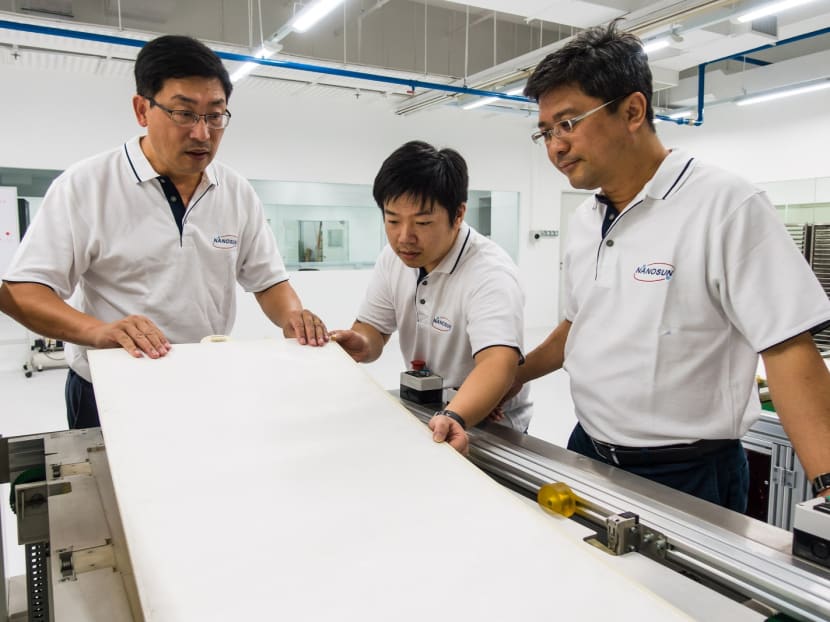From Singapore to the world: 3D printed toilets and next-gen water treatment membranes
SINGAPORE — If scientists from the National University of Singapore (NUS) had their way, toilets in Singapore and abroad would be built more cheaply and rapidly using 3D printing.

(From left) Nano Sun co-founder and NTU associate professor Darren Sun, engineer Zhang Lilin and managing director Wong Ann Chai inspecting a completed membrane module.
SINGAPORE — If scientists from the National University of Singapore (NUS) had their way, toilets in Singapore and abroad would be built more cheaply and rapidly using 3D printing.
The researchers and their collaborators have developed a novel toilet unit design that can be 3D printed in less than five hours and that is 25 per cent cheaper than usual.
They hope to ship their first unit to India, where the lack of sanitation poses serious health problems such as diarrhoeal diseases. The Indian government has pledged to end open defecation by next year.
The project is one of two research projects by the NUS Centre for Additive Manufacturing’s newly launched Construction 3D Printing Programme.
The second project could help speed up the construction of a typical public flat’s bathroom by nearly 24 times. The bathroom’s formwork – moulds into which concrete or similar materials are poured – is 3D printed and consists of polymers instead of steel and timber.
Using the 3D printed formwork, up to 24 bathroom units could be constructed in a day using a semi-automated production line, said the NUS in a media release on Thursday (July 5). Currently, it takes almost a day to construct a typical Housing and Development Board flat’s bathroom unit, the university said.
3D printing has transformed manufacturing in the medical, aerospace and other sectors, and can similarly impact the construction industry, said the NUS. It can improve building structures using materials that are more eco-friendly.
Separately on Thursday, the Nanyang Technological University (NTU) said its spin-off, a water technology start-up called Nano Sun, has launched a 3D printing facility for water treatment membranes.
The next-generation membrane, made up of millions of nanofibers layered on top of each other, is less prone to breakage and requires less maintenance than typical membranes made of porous polymers. They allow for a faster water flow rate, but with a similar pollutant rejection rate.
This allows for the construction of smaller wastewater treatment plants, resulting in lower costs for land, infrastructure and labour, said NTU.
Nano Sun’s new facility – supported by the Singapore Economic Development Board – is the result of two decades of work by its co-founder, NTU associate professor Darren Sun.
“In recent years, there are not many Singapore-based product start-ups with manufacturing ambitions, due to long research-to-commercialisation cycles and significant capital investments,” said Dr Ho Chaw Sing, managing director of the National Additive Manufacturing Innovation Cluster. The cluster was launched in October 2015 to speed up Singapore’s industrial adoption of 3D printing.
Nano Sun has already signed its first customers for the new membrane, and its managing director and co-founder Wong Ann Chai said its annual revenue is set to hit S$10 million this year. Two multinational semi-conductor firms in Singapore and a new municipal wastewater treatment plant in China will be the first to use the new membrane.
“The international market demand for industrial wasterwater treatment is going strong since most countries do not want to pollute their scarce surface water and underground water resources,” said Mr Wong.
Nano Sun will expand its manpower from a Singaporean team of 18 engineers and staff, to about 80 in the next three years. It is looking to deploy its technology in China, Indonesia and the Philippines.






